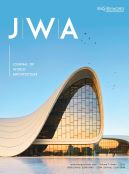Improving Classroom Teaching Quality of Architectural CAD Through the Integration of Competition Content
Abstract
Architectural Computer-Aided Design (CAD) is a highly technical and practical course and is also a course where its knowledge can be directly applied in the working field, which is especially important for higher vocational students majoring in architecture. In order to improve the teaching quality of this course, this paper proposes the integration of competition content into teaching under the based on the original syllabus. Therefore, the content of the “Reading and Drafting of Construction Drawings” competition is integrated into the teaching of this course, so as to realize the balanced development of teaching and competition, enhance students’ professional skills and practical ability, and help students adapt to the development of the industry. With that, the goal of personnel training in higher vocational colleges can be achieved.
References
Zhang S, 2014, Analysis of the Problems of Architectural CAD Course in Higher Vocational Practice Teaching. Sichuan Building Materials, 40(6): 291–292.
Yin X, 2013, Problems and Countermeasures of CAD Teaching. Journal of Shanxi Radio & TV University, 18(01): 34–35.
Wang S, 2019, Application of Multi-Level Practice Teaching in Civil Engineering Drawing and CAD Course. Ju She, 2019(21): 183.
He Q, 2018, Exploring “Promoting Teaching and Learning by Competition” Models of Practical Teaching — Take Architectural Drawing Course as an Example. Journal of Tianjin Sino-German University of Applied Sciences, 2018(03): 82–87.
Zhang X, Zhang L, 2019, Research on Teaching Reform of “Architectural Structure and Drawing” Course in Higher Vocational Colleges Based on “Integration of Competition and Education”. Journal of Jinhua Polytechnic, 19(03): 48–51.

